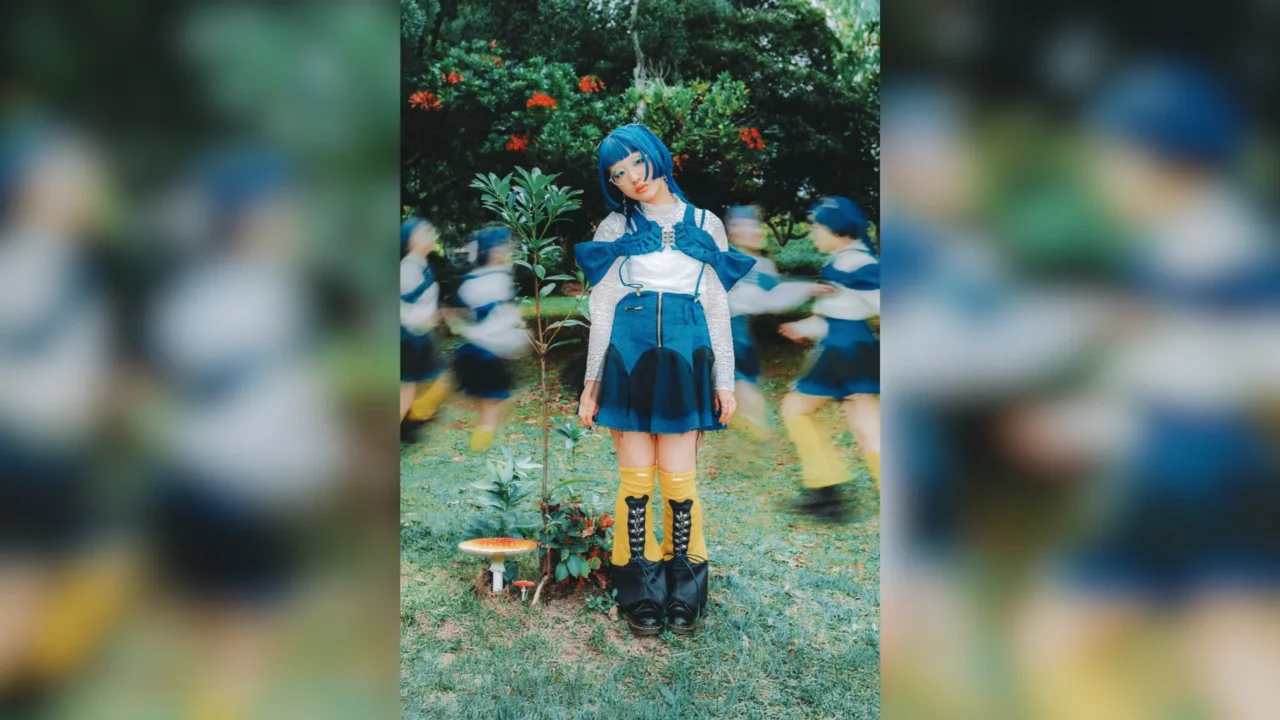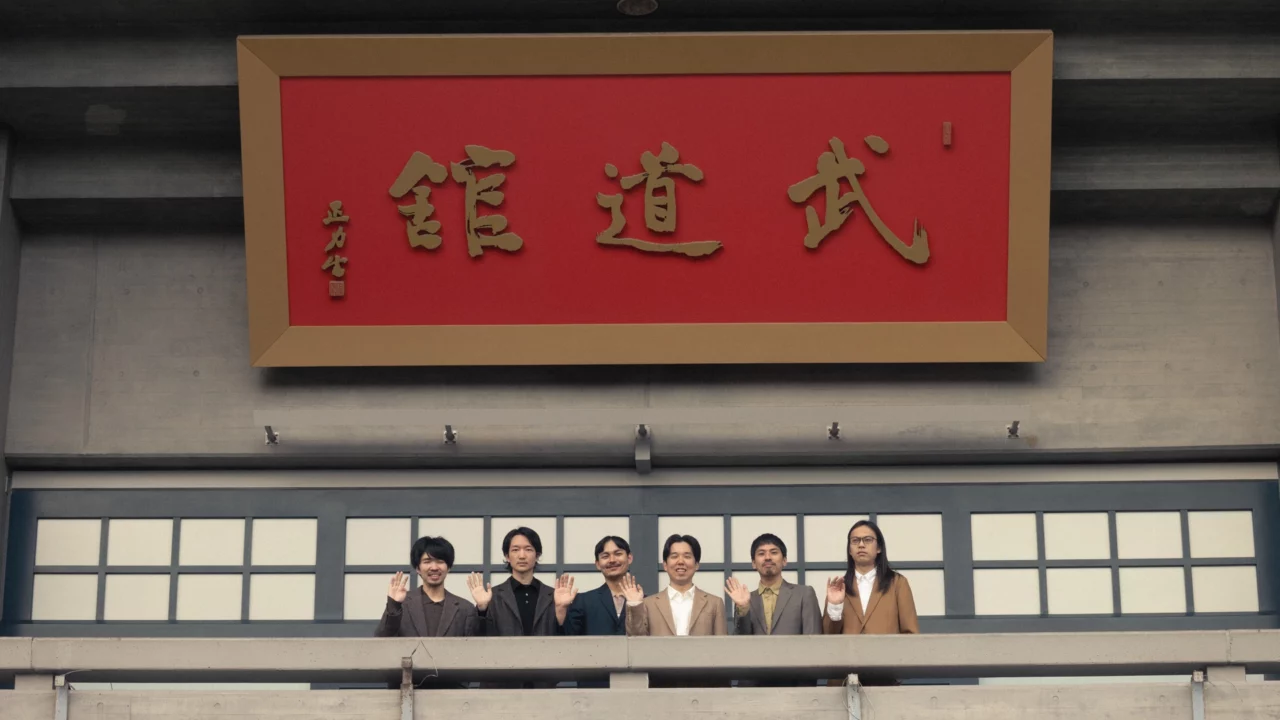Director Alexander Payne’s latest film, ‘The Holdovers’ known for his previous works like ‘About Schmidt,’ ‘Sideways,’ and ‘Nebraska,’ will be released on June 21 (Friday).
The film meticulously evokes the 1970s era through its art, costumes, cinematography, and music, aiming beyond mere vintage simulation to provoke reflection on the present through history and the past, notes critic Yuji Shibasaki.
The name of clarinetist Artie Shaw, beloved by a character in the film, who thrived in the 1930s to 1940s, carries significant meaning. This insight is explored in the 15th installment of the series “How Song Selection Shapes Movies.”
*This article contains descriptions related to the content of the film. Please be aware.*
INDEX
Human Drama Set in a Boarding School in the 1970s
Attention to detail and classy realism. The humor is dry and daring, and the people are warmly cared for. Alexander Payne is a contemporary master filmmaker who has achieved a rare, if not spectacular, result by skillfully blending all of these elements into a single film.
For fans of Payne’s work, ‘The Holdovers’ is a fortuitous film. Twenty years after their exquisite combination in ‘Sideways’ (2004), his masterpiece and nominee for the “Academy Award” for Best Adapted Screenplay, Payne is back with Paul Giamatti.
The film is set at the Barton School, a boarding school near Boston, U.S., during the Christmas season at the end of 1970. The protagonist, Paul Hannum (Paul Giamatti), is a dour middle-aged man who has been teaching ancient history at this traditional school for many years. Just before Christmas vacation arrives, he is assigned to supervise the students who remain in the school during the same period, unable to return to their parents, as punishment for flunking the son of a senator. The students are fed up from the start with having to spend their vacation with Mr. Hannam, a stiff (and hated by the whole school), but so are the teachers. In addition, another student, Mary Lamb (Davine Joy Randolph), the head cook of the school’s cafeteria, is about to celebrate Christmas without her family in a run-down school building. She had just lost her only son, Curtis, a student at the school, for one reason or another.
A short time after the start of this shabby vacation, a helicopter suddenly arrives on the school grounds. The father of one of the detentions, Chopper, had come to take his son out on a ski trip. The students immediately call their parents and ask permission to accompany their son on the ski trip. However, only one student, the troubled Angus Tully (Dominique Cessa), is left behind, unable to reach his mother. His mother has cancelled Angus’ long-awaited vacation to St. Kitts at the last minute and has gone off on her honeymoon with her future husband. As is evident from this turn of events, he seems to be having major problems with his family relations.
Hannam, Mary, and Angus are the only ones left. The three of them, each with their own feelings of alienation, clash over trivial matters and treat each other in a distant manner. However, amidst the various events that happen day after day, they listen to each other’s stories and gradually come to understand each other. ……

In his previous films, Payne has depicted the feelings of loneliness and alienation felt by “ordinary people” of various ages and origins, and his characterization of each of the characters in this film is very skillful. At the same time, he not only emphasizes the melancholy of his characters, but also infuses them with comedic elements as always.
Payne is also known for his attention to detail in art and costumes, and his attention to detail in this film is the highest in his career. The first thing to note is the thorough simulation of the “1970s feel” of the film. Even the studio logo and title card that appear at the beginning of the film are enough to make any lover of 1970s American cinema smile, but this is literally just the beginning. The film’s use of state-of-the-art technology is evident in the unprecedented level of “film-like” vintage-style production, including the use of color tones, noise, and the flickering feel of frame-by-frame transitions. The film also makes bold attempts in shots and editing, effectively using techniques common in 1970s American films (but rarely used today), such as extreme zooming out, to create a picture with a critical mass that is more than just “1970s-style”.
INDEX
Vintage Sound Quality: Deliberate Degradation and Atmosphere
The same orientation applies to the treatment of the sound. As the author of this series, I was even more deeply impressed by this aspect of the film.
In an interview with the film information website Flickering Myth, Mark Orton, who was in charge of the original score for this film, stated the following
Even before I was looking at the picture, he spent a week up here in Portland, Oregon, where I live in this very messy studio. We just spent a week talking about the music of the time period taking place in 1970. It is critical to his work on this one because he wanted it not only to feel like a film that was taking place in 1970 but truthfully to feel like a film that was created in 1970. I mean, he put those limitations on himself on the sound on the music side, even to go as far as to have an optical soundtrack, you know, with the film when you see it in a mono theatre, as it would have been in 1970. So opposite of Dolby Atmos and that aesthetic.
From https://www.flickeringmyth.com /exclusive-interview-composer-mark-orton-on-the-holdovers/
As the discerning viewer will immediately notice, the film’s soundtrack sounds quite lo-fi compared to most modern productions. It’s almost as if one is experiencing a film screening of a 1970s film. According to the article ” The “Film Look” and How The Holdovers Achieved It ” in Filmmaker Magazine, the soundtrack was rolled off at a low 8khz sampling rate in order to resemble the “Academy Monostandard” standard of the time. The roll-off process was done at a low 8khz sampling rate to resemble the “Academy Mono Standard” of the time. The effect is remarkable, and the low-fidelity of the audio gives it a sense of authenticity that is paradoxical in today’s media environment.

In addition to such technological exploration, the music selection is also thoroughly inspired by the “1970s” style. Let us list some of the existing songs used in the film.
The soundtrack features songs like The Chambers Brothers’ ‘The Time Has Come Today,’ Shocking Blue’s ‘Venus,’ Lalo Schifrin’s ‘Crying, Laughing, Loving, Lying,’ The Allman Brothers Band’s ‘In Memory of Elizabeth Reed,’ Tony Orlando & Dawn’s ‘Knock Three Times,’ Cat Stevens’ ‘The Wind,’ and more. Additionally, reflecting the Christmas season in the film’s setting, easy-listening versions of Christmas songs by The Swingle Singers, Herb Alpert & The Tijuana Brass, Andy Williams, and others are generously used. Some contemporary artists like indie folk singer Damien Jurado and indie rock band Khruangbin are also featured, fitting seamlessly into the vintage-inspired sound that has garnered high praise for blending perfectly with the film’s mood.
A similar trend is evident in the original score by Orton. As mentioned above, Orton and director Payne had a lengthy discussion prior to the production of the film, during which they listened to Carole King’s masterpiece “Tsuzure-ori” (1971) and studied other specific works from the early 1970s. Fans of rock and pop music of the time will immediately recognize the results of this research. In particular, the folk-rock “Candlepin Bowling” has such a “look” that I myself believed it to be an existing song by an artist from the 1970s until I checked the credits.
INDEX
Embracing Vintage Beyond Nostalgia
By the way, not limited to movies, it’s often observed that works explicitly intending to evoke a certain decade’s style are praised for their skillful reproduction, yet they can also be narrowly perceived as mere mimicry, neither more nor less. Indeed, while we may admire the meticulous detail of such diorama-like representations, we often find ourselves wondering, ‘So what?’ However, the artistic vision of master filmmaker Alexander Payne transcends such trivial concerns. In this film, he elevates the act of focusing on vintage representations beyond superficial obsession and the closed forms of communication it inevitably generates, moving it into the realm of belief.

The strength of this conviction can be seen in the words and actions of the protagonist, Dr. Hannam. As mentioned above, he is a history teacher specializing in ancient history. He communicates to his students as well as to his colleagues by quoting the words of ancient Greek and Roman philosophers and intellectual giants. At first glance, this may sound like the ramblings of a solitary, hard-nosed teacher who is cut off from the real world. However, it goes without saying that history, or stories of the past, are not merely a way to memorize events that have passed, but are capable of communicating with the lives of people today and the problems that arise in their lives, and sometimes even shedding light on them.
One day during his vacation, Dr. Hannam and Angus stroll through the streets of Boston on what they call a “social studies field trip. Angus is excited to see one of the exhibits at the Archaeological Museum, and the teacher says to him, “If you want to understand the times we live in and who you are, you have to understand the times.
To grasp the current era and understand yourself, beginning with the past is essential. History not only educates us about bygone times but also sheds light on the present.
This may sound like a common sermon, a familiar phrase. But for Angus, who is going through a difficult time in his life, lacking self-confidence and struggling with his relationship with his parents, the power of these words is very strong. Angus, who was listening with a serious expression on his face, said, “It’s very easy to understand.
That’s very clear. Please teach us like that in class without yelling
This proverb from Mr. Hannam is perhaps the most important key to understanding the “vintage” structure of this film. This is not an exaggerated analogy, considering that Alexander Payne himself studied history and literature at Stanford University before deciding to pursue a career in film.

INDEX
Insights from Mary’s Late Son, Curtis
Here is another interesting depiction that reinforces this view. In this sequence, Mr. Hannam, Angus, Mary, and Danny (Naheem Garcia), a janitor at Barton School, attend a Christmas party at the home of Miss Lydia (Carrie Preston), the principal’s assistant. Here, Mary takes it upon herself to select the background music for the party. As the drinks are served and Mary becomes increasingly emotional, she plays “When Winter Comes” (originally released in 1939) by Artie Shaw and his orchestra, a musician who was a favorite of her late son’s before his death. The music of Artie Shaw, a bandleader who led the heyday of swing jazz from the late 1930s to the early 1940s, would be too “old-fashioned” (as Mary herself said with a tearful smile) for young people to like in the early 1970s. In fact, in the scene that follows, a young customer insists that the record be changed, but Mary rebuffs him with a mighty swagger.
What is the story being told here? Is she simply trying to say that “Mary’s beloved son had a rather unusual taste in music”? To me, I don’t think that’s all it is. Rather, I think that this scene presents one of the most important lessons in the film in a way that overlaps with what I have discussed above.
As indicated in the completion ceremony scene at the beginning of the film, Mary’s son Curtis unfortunately lost his life while serving in the Vietnam War. His creativity during his life was acknowledged by Mr. Hannam, who tends to be difficult with his students, and many of his schoolmates also express their condolences for his tragic death. Through his absence, Curtis represents a kind of nobility, wisdom, discernment, and discretion that Angus and the rest of the students (cunning and immature, according to Mr. Hannam) will never attain at this point in their lives (see his portrait displayed ostentatiously in the unoccupied lecture hall). (See how his portrait hangs proudly in an unoccupied auditorium).
(See his portrait displayed ostentatiously in an unoccupied auditorium.) Given this, the somewhat abrupt episode in which Curtis shows a taste for old-time music, which is not unlike that of a young man, seems to have a narrative inevitability to it. In other words, Curtis is paradoxically brought to life through his absence as a person with a sensitivity for old-fashioned culture, or more specifically, as a person who knows the wisdom of history, and thus commands the respect of all the characters in the story.

The subplot involving Curtis, a young Afro-American war veteran, also subtly conveys Payne’s socialist side. In the late 1960s, when the Vietnam War became a quagmire, Afro-Americans served in the U.S. military in a large proportion of the overall U.S. population, and the death rate was similarly high. In other words, at a time when young people were being deployed to the front lines one after another, while many children of wealthy whites were able to avoid military service by pursuing higher education, young Afro-Americans, who were economically and environmentally disadvantaged, were forced to join the war effort for a variety of reasons and were even forced to join ground troops, which did not require a high level of expertise. In addition, they tended to be preferentially assigned to ground troops, which did not require a high level of expertise. Curtis’ death is an example of the tragedy of such a severe disparity.
INDEX
The Selection of Artie Shaw: Exploring the Choice
If we delve further into this episode from the perspective of racial issues, the question arises as to why Curtis’s favorite big band jazz leader was not a “compatriot” like Count Basie or Duke Ellington. While I know I should refrain from going too far, if I may use an analogy, I think it is because the problem consciousness of director Payne himself (and the music team, including Orton) is engraved here, rather than the character of Curtis.
In 1938, Shaw became the first white band to recruit an Afro-American woman, Billie Holiday, as a singer. Billie Holiday as a singer and toured the U.S. South. However, under the Jim Crow laws of the South, where strong discrimination was rampant, Holliday was subjected to intense ill will, and despite Shaw’s efforts to have her treated equally with the white members, she was forced to leave the band at the behest of the industry. Strange Fruit,” a song in her repertoire recorded in 1939 and known for its bitter protest against racial discrimination, was indeed recorded after the experience described above.

Described by Holliday as a fighter against the vulgar “norms” of the music industry of his day, Artie Shaw was a man who took a firm stand against unfair discrimination and, according to numerous anecdotes, was an honorable man who would not bend, or to put it another way, a very difficult man. He was also a man of literature and the arts in general. Moreover, he was a man with extensive knowledge of literature, the arts, academics, and science. In other words, he was quite similar to Dr. Paul Hannam, the main character in the film “Holdovers: Holiday Without Me.
Dr. Hannam, in turn, is portrayed as someone who is aware of the problem of racism, albeit not in an overt way. In one scene, shortly after Christmas vacation, Hannam asks Mary to join him and his friends at the dinner table. Mary politely declines and leaves the scene, but Kunz, the school’s baddest boy, scolds her, saying that it is foolish to invite a servant to join her at the table out of sympathy for the loss of her son in the war. Dr. Hannam rebukes Kunz with a fiercer tone than ever before.

INDEX
Understanding the Present Through Historical Reflection
I may have gone a little too deep into the sub-stories. What emerges clearly from this series of descriptions and analyses is the validity of thinking about the present through “history” and the “past,” and the strong invitation to take the time to engage in such an activity.
Here’s the English translation:
Although I’ve spent a fair amount of words discussing it, there’s still much more to uncover about the embedded representations of the past in this film and their interplay. For instance, parallels can be drawn with Hal Ashby’s works like ‘Harold and Maude’ (1971) and ‘The Last Detail’ (1973). There’s also an emotional resonance reminiscent of Paul Mazursky’s ‘Harry and Tonto’ (1974) and a sense of melancholy akin to Bob Rafelson’s ‘Five Easy Pieces’ (1970) that seems to seep through. The scene where they watch Arthur Penn’s ‘Little Big Man’ as part of a Boston ‘field trip’ is particularly memorable. Additionally, the impactful use of the popular American TV variety show ‘The Newlywed Game’ from that era stands out. Furthermore, the books that Hanam-sensei frequently intends to gift, such as Marcus Aurelius’s meditations known as ‘Meditations,’ are particularly characteristic of his philosophical emperor persona (is there a more fitting book for Hanam?)

‘The Holdovers’ could be considered a gimmicky, nostalgia-oriented film in the sense that it is decorated with vintage textures and quotes from various representations of the past in every direction. However, as I will repeat again, the film’s gaze on “the past” and “history” is clearly inscribed with a strong conviction and a literal eye for the classics, which is clearly separated from such postmodern playfulness. We should all read Cicero’s book, drink some old whiskey, and listen to a great swing jazz performance. We will surely hear the “now” and see it emerge.
The Holdovers

Roadshow from June 21, 2024 (Fri.) at TOHO Cinemas Chante and other theaters nationwide.
Director: Alexander Payne
Screenplay: David Hemmingson
Cast: Paul Giamatti, Davine Joy Randolph, Dominique Cessa
Distributor: Bitters End Universal Pictures
https://www.holdovers.jp






















